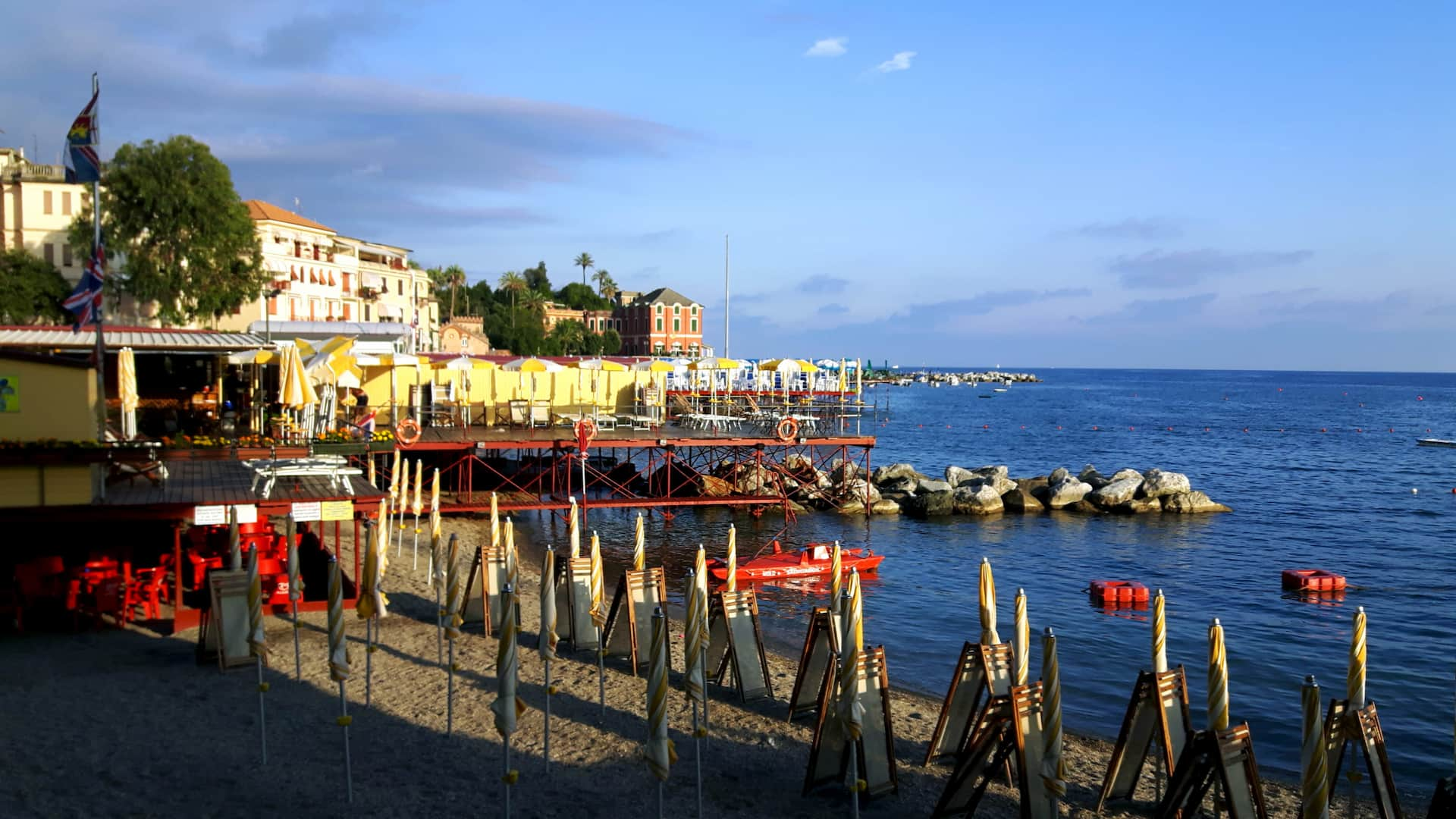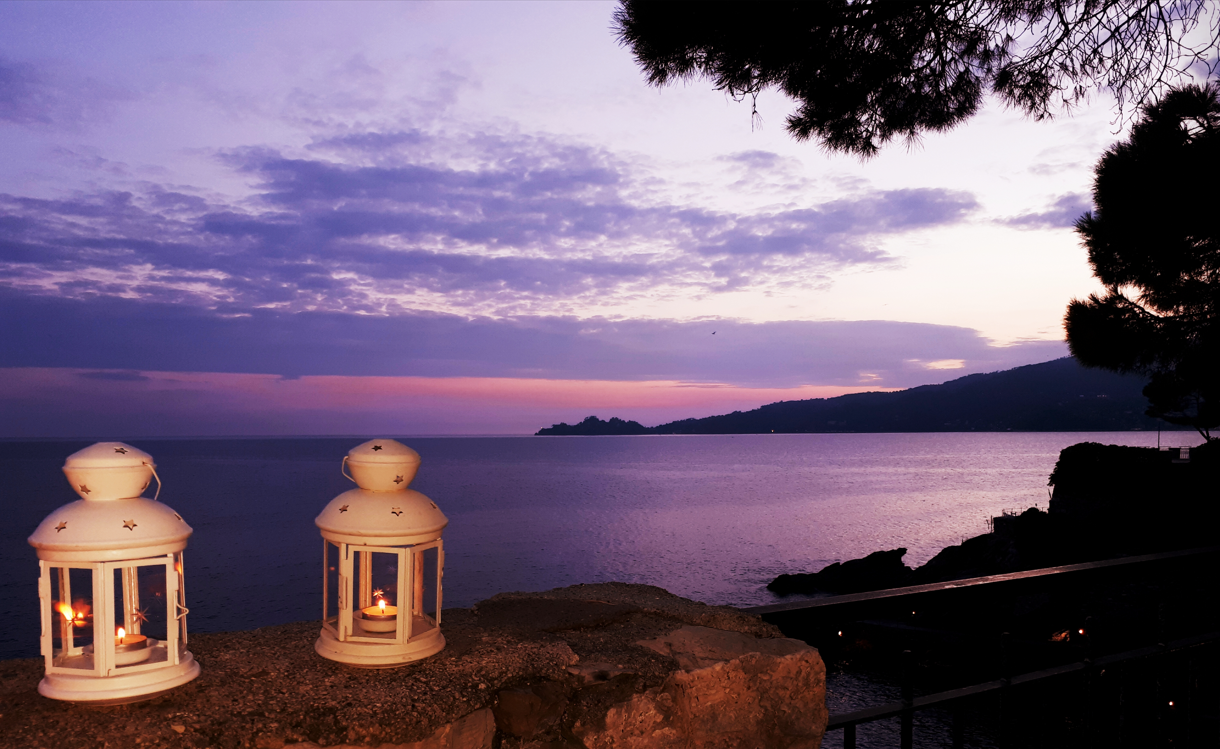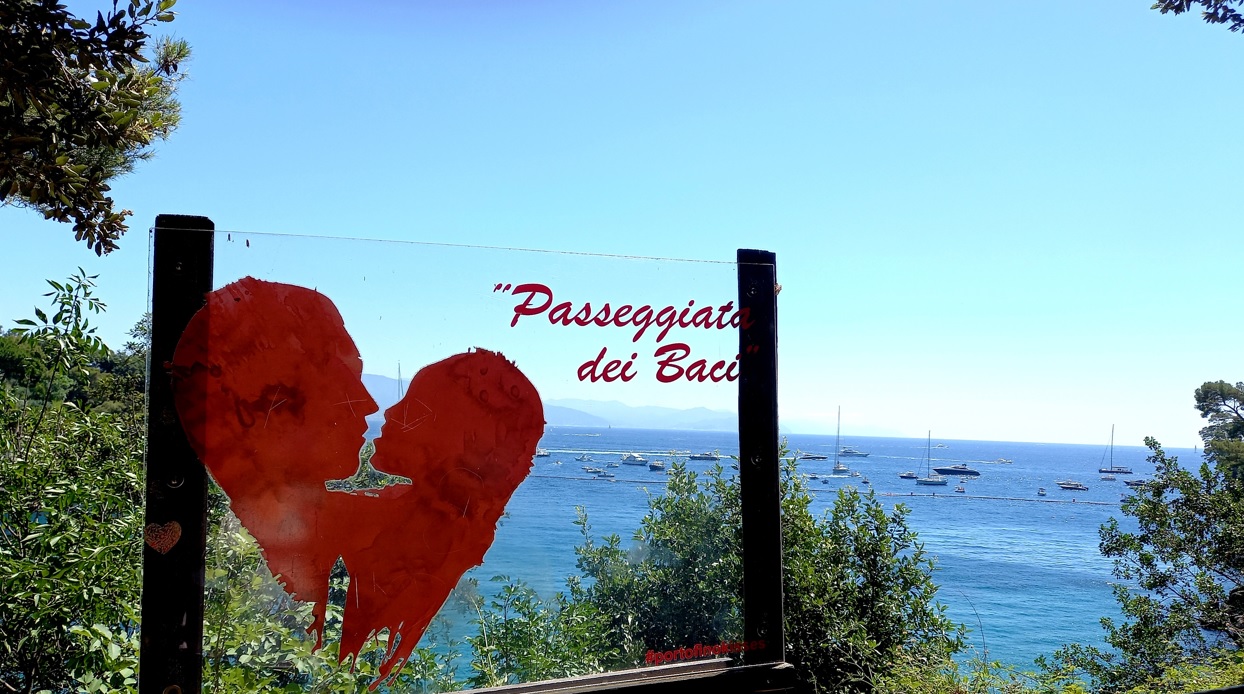
What to do in Rapallo
Located in the most internal and sheltered part of the Tigullio Gulf, Rapallo has ancient origins. The first settlements apparently arose at the mouth of the Boate River and its name seems to derive from Ra palù meaning ‘swamp’.
There are numerous traces of the past, such as the Castle, built over the sea in the 16th century against Saracen raids, or the Medieval Bridge, over which, according to legend, Hannibal passed during the Second Punic War, or the numerous Baroque bell towers towering in the sky.

Rapallo has developed a profound vocation for tourism since the second half of the 19th century, soon becoming an ideal destination for illustrious personalities, thanks to the mildness of its climate and the quality of its offerings
Let us therefore start our walk from the historical centre.
In the Middle Ages, the ancient village was surrounded by walls within which several gates opened. One of these gates, the Porta delle Saline, is still visible. The historical centre today is entirely a pedestrian area, made up of a network of ‘carruggi’ and two main streets; Via Mazzini, which the people of Rapallo call ‘carruggio drito’, and Via Venezia , formerly known as ‘Rolecca’, animated by craft workshops, bars, restaurants and elegant shops.
There are also some important religious monuments in the historical centre, including the Basilica of Saints Gervasio and Protasio, the Oratory of the Whites, dating back to the second half of the 15th century, which contains the precious Crucifixes that are carried on the shoulders during the procession during the Patronal Feasts, and the Parish Church of Santo Stefano (Oratory of the Blacks), the first Christian religious building to be erected in the Rapallo area, at the beginning of the 12th century. Together with the nearby Oratorio dei Bianchi, the adjacent Torre Civica (Civic Tower) and the complex of the current Palazzo Municipale (Town Hall), it is part of the original nucleus that gave life to the primitive Rapallo community in medieval times.

Our walk then continues along the Vittorio Veneto promenade, where restaurants, bars and pizzerias are spread out. In the centre of the promenade is the Music Kiosk, inaugurated in 1929 and designed to host band concerts.

Continuing eastwards, you come to the famous Rapallo Castle, which stands on a base of rocks, directly on the sea. It consists of a bastion with tower and sentry box, and was built in 1546 to defend the town that had been ravaged by a terrible raid by the Turkish pirate Dragut. It is currently the venue for important art exhibitions.

Continuing our walk we reach the Parco Casale, a green oasis perfect for a pleasant stroll. Following the road inside the park, one reaches Villa Tigullio, an old historic residence that opens onto a beautiful English-style lawn overlooking the sea. Villa Tigullio, houses the International Library and Lace Museum The promenade continues alternatively along Via Avenaggi, with suggestive views of the city and the Portofino Promontory.


Instead, walking towards the west, one reaches Hannibal’s Bridge, an ancient single-span stone bridge that legend, which has not been proven, says was crossed by Hannibal during the Second Punic War.
Proseguendo si può raggiungere a piedi (circa 2 km) San Michele di Pagana, località situata a metà strada fra Rapallo e Santa Margherita Ligure. It is a small hamlet characterised by typical Ligurian coloured houses facing the sea. The promenade that connects the three small creeks bordering San Michele di Pagana, Pomaro, Trelo and Prelo is suggestive.
In San Michele di Pagana, the parish church is worth a visit. Inside, there are valuable works of art, including the Crucifix with Saints Francis and Bernard by the famous Flemish painter Antoon Van Dyck, commissioned by Francesco Orero around 1620. There are also other works from the Flemish and Genoese schools






